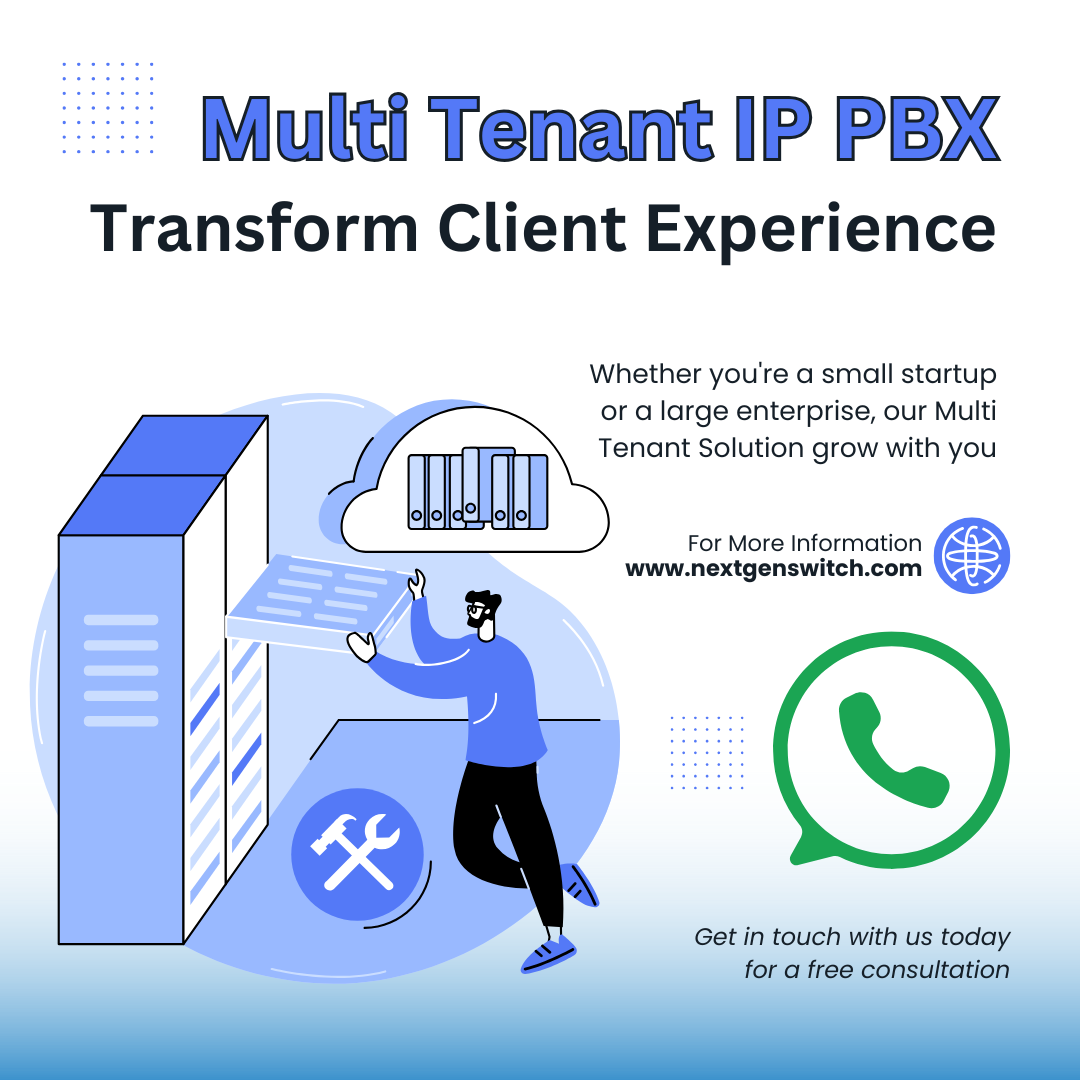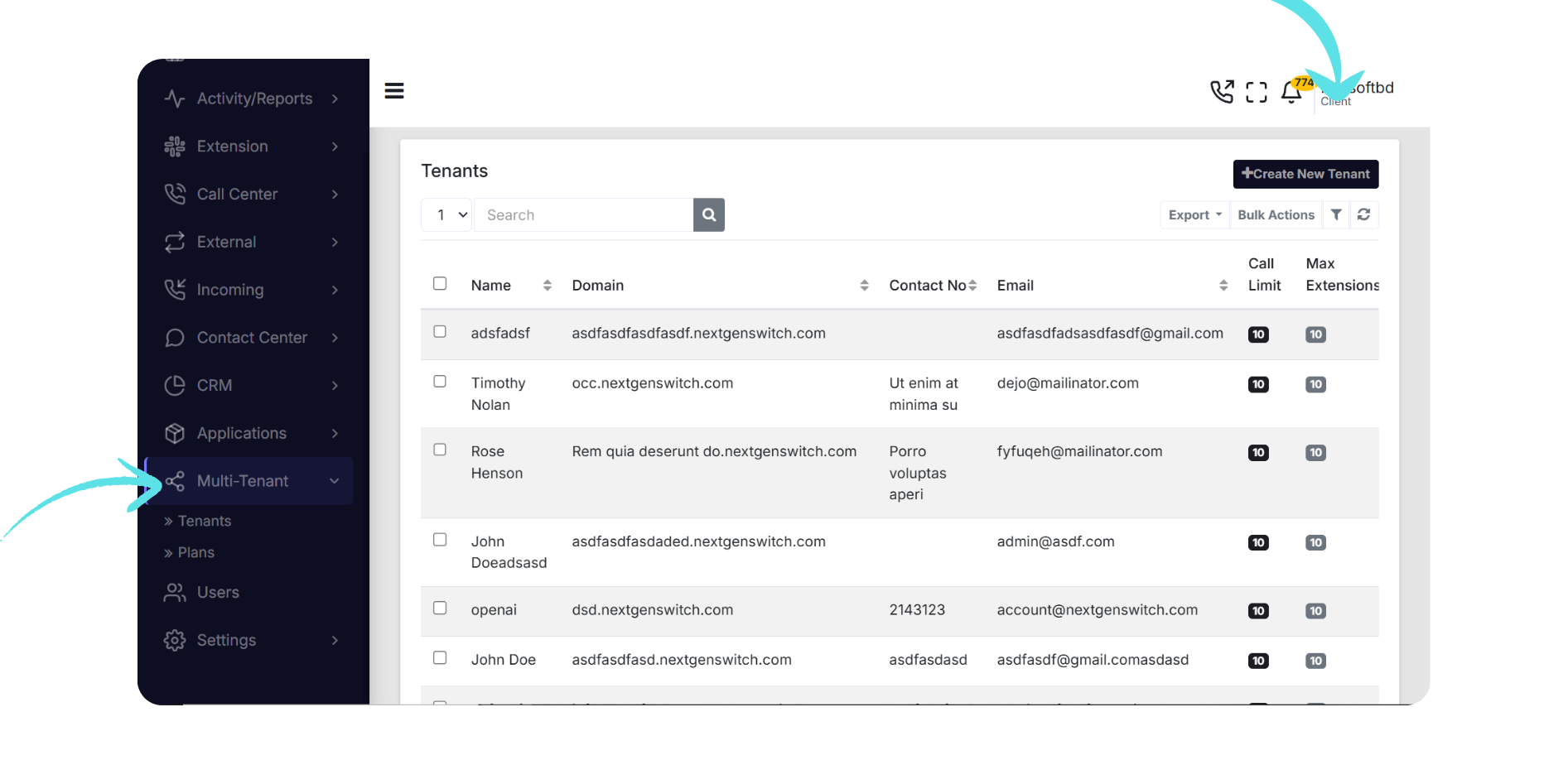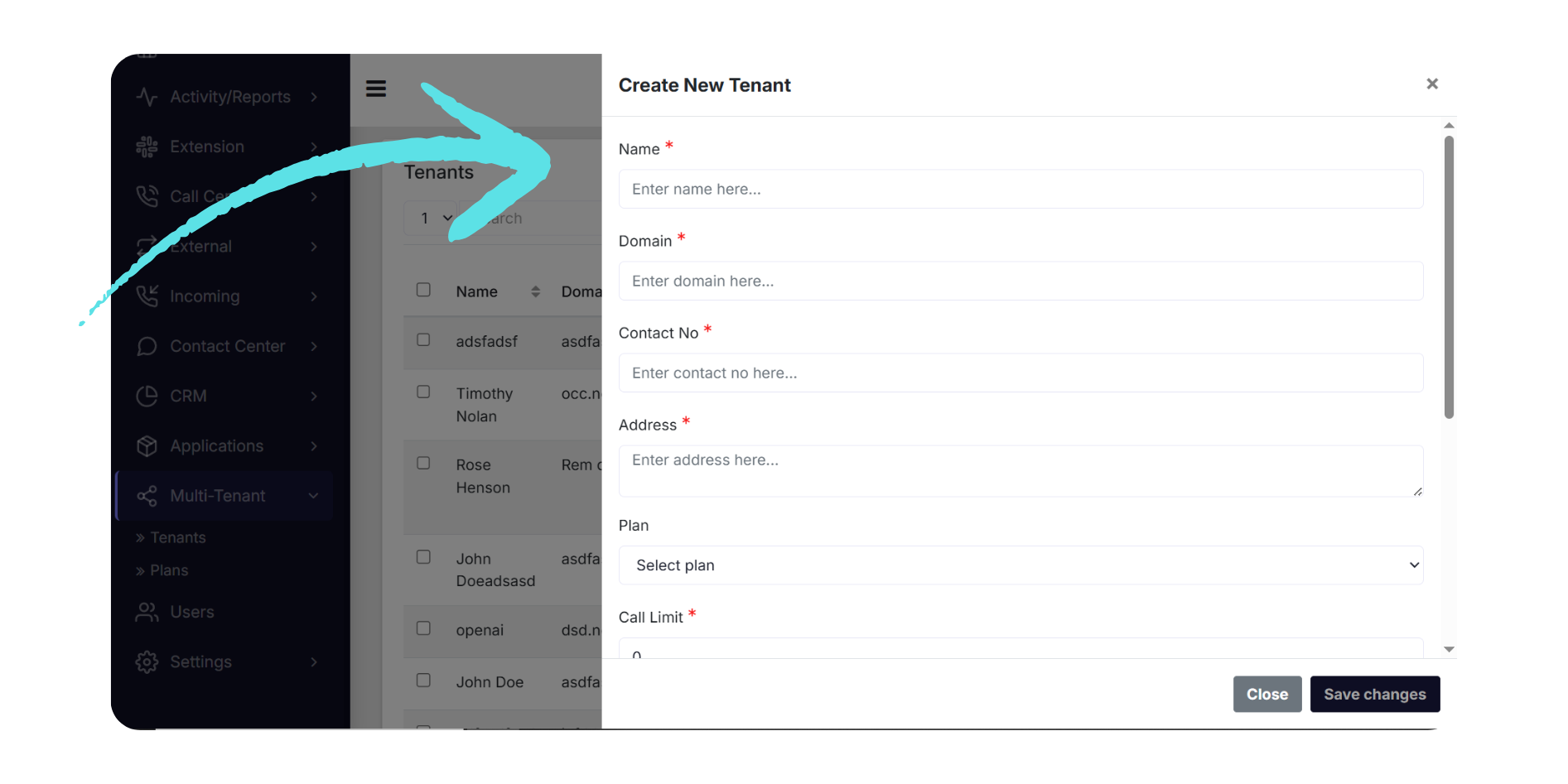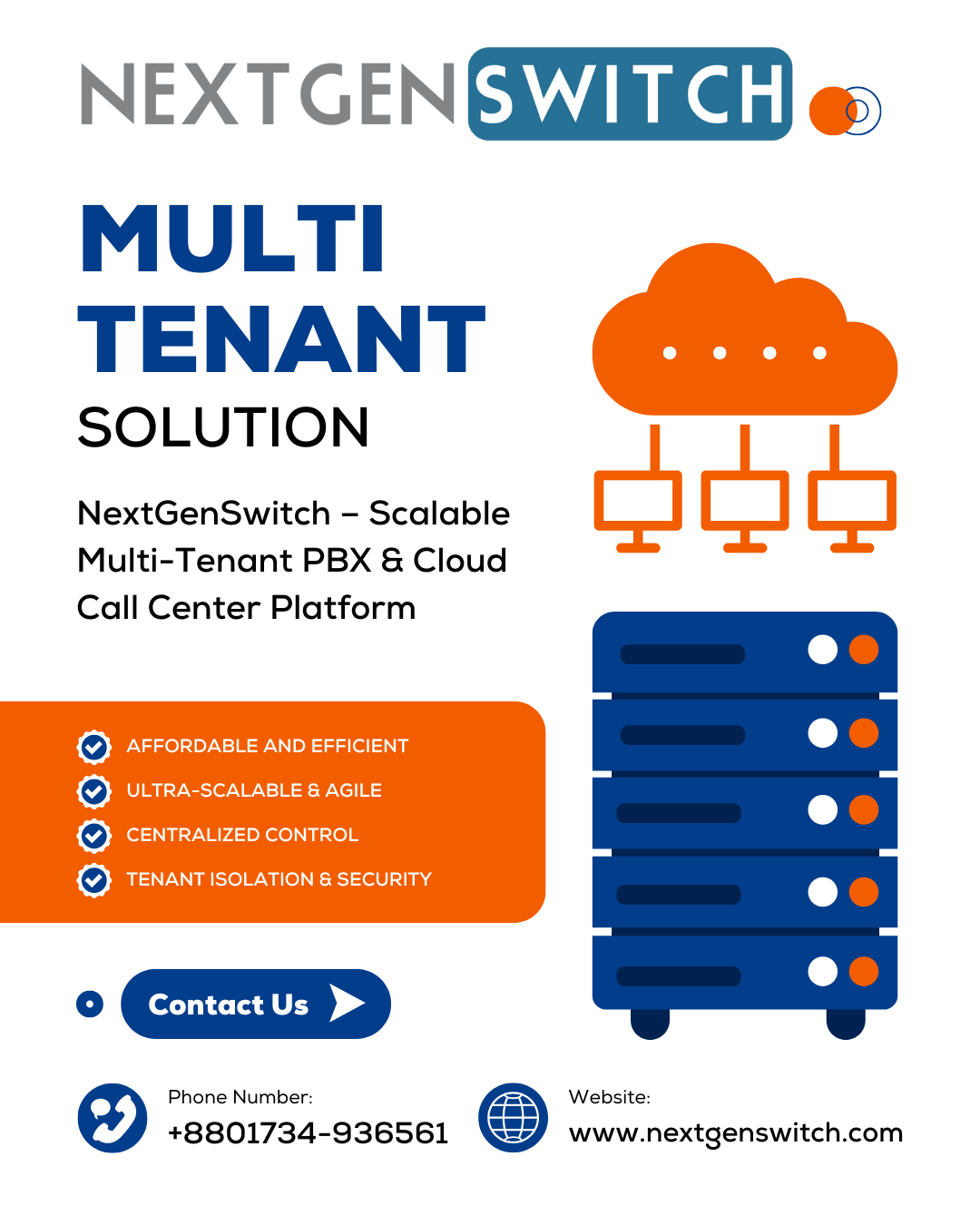
NextGenSwitch – Scalable Multi-Tenant PBX & Cloud Call Center Platform
NextGenSwitch is a powerful, API-driven Multi-Tenant PBX solution designed for service providers, call centers, and enterprises. Deliver secure, cloud-based voice and contact center services to multiple clients or departments from a single platform—complete with AI-powered IVR, automated outbound campaigns, and centralized management.


